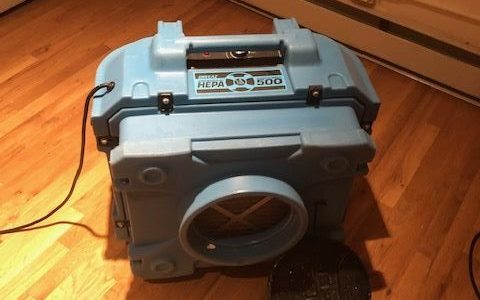WHAT AMOUNT OF MOLD IS CONSIDERED “ELEVATED”?
There are, at present, no government rules or national gauges figuring out what levels of mold presence represent a health hazard. Each individual reacts to mold differently.
But, there is a general agreement that mold presence should be lower inside than outside (for example, lower than the open air that you take in regular). But, this is only a general principle, and there are many, numerous variables –, for example, the climate outside which impact mold checks and the inhabitants’ health profile (for example, a few people are increasingly inclined to manifestations of mold, for example, asthmatics) – that make it difficult to decide whether there is a hazard related with mold from identifying mold risk levels alone.
All things considered, you should not see stubborn mold development in your home. When it proliferates on drywall, wood, and so on., mold risks are raised past an “ordinary” indoor condition. Yet, additionally, remember that mold can take cover behind walls, in ventilation work, and so on, and you can have raised mold checks without really having the option to see noticeable mold development with the unaided eye.
WHAT ELEMENTS ARE REQUIRED FOR MOLD GROWTH?
Mold requires three things to develop:
- Natural food source. (Incorporates most building materials, for example, wood, drywall, protection, and so forth.)
- Water source. (for example flooding, spills, buildup, and so forth.)
- High relative dampness (Above 60% is suitable for mold development.)
Since natural food can be discovered pretty much anyplace, the least demanding and best approach to control mold development is by wiping out any undesirable water sources.
Mold development can happen in as meager as 24-48 hours under the correct conditions.
HOW WOULD YOU KNOW IF ITS MOLD OR IF YOU HAVE A MOLD ISSUE?
Mold can be a wide range of colors: white, black, yellow, green, brown, and so forth. It might look fuzzy, disgusting, or fine.
For the most part, you can see or smell mold. If you can see it or smell it, this typically implies you have raised levels of mold. However, mold development can likewise be covered up. If you don’t know, contact a mold expert at Indoor Mold Testing New Jersey.
WHAT DOES MOLD SMELL LIKE?
Mold can disperse Volatile Organic Compounds (VOCs). These VOCs regularly have solid and offensive smells. A moldy smell shows that mold development may be happening and should be thoroughly inspected.
WHAT ARE THE BASIC HEALTH IMPACTS FOR PEOPLE EXPOSED TO ELEVATED MOLD CONDITIONS?
The impacts of mold introduction to people in indoor situations are an ongoing concern. In this manner, further research is progressing to comprehend the effect of mold on people. All things considered, typical symptoms of mold are believed to be:
- Sniffling
- Hacking
- Eye Disturbance (Watery, Irritated or Red Eyes)
- Nasal Clog
- Runny Nose
- Skin Rashes
- Difficulty Relaxing
Talk to your doctor if you trust you or somebody near you are encountering medical issues from mold exposure.
And be sure to contact us above to speak to a licensed technician about your concerns and to discuss the best next steps to take for your situation.

